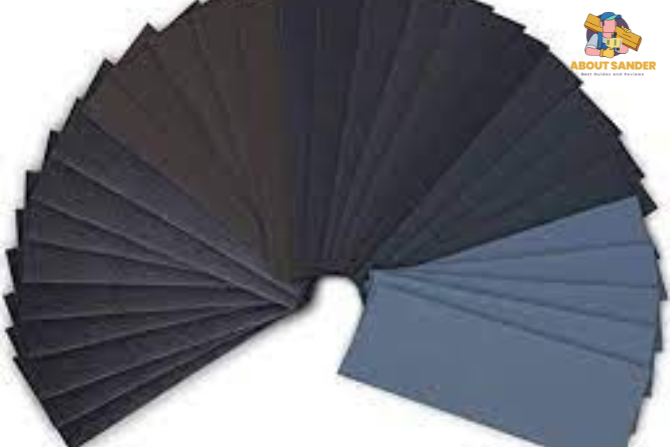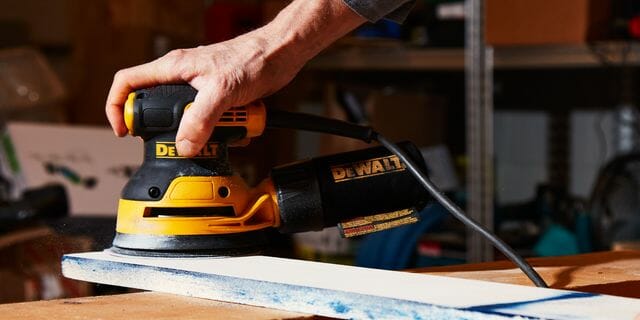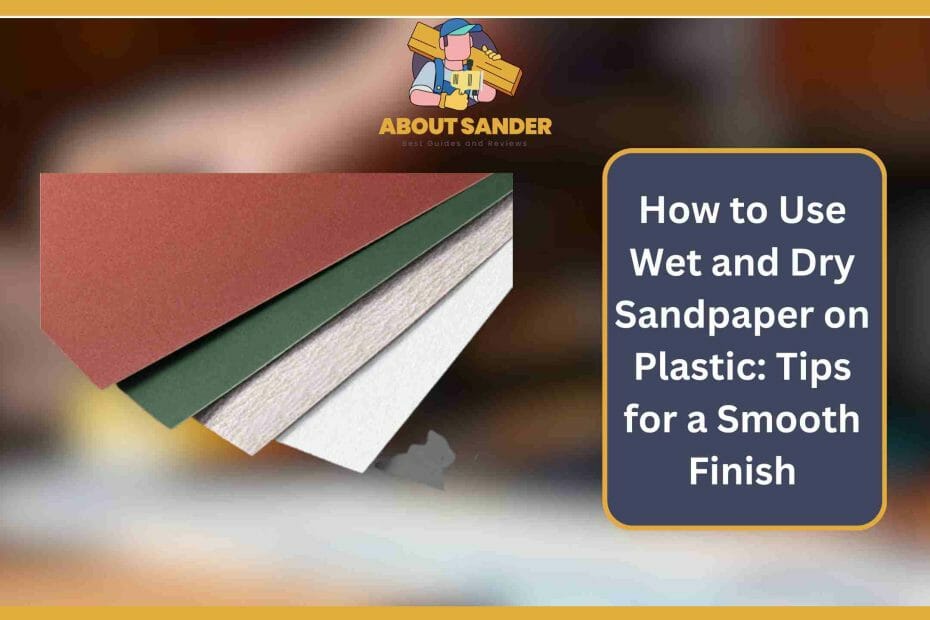Learn how to use wet and dry sandpaper on plastic with our easy-to-follow guide. Whether restoring an old toy or looking to polish plastic surfaces, this step-by-step tutorial will provide the tips and techniques you need to achieve a smooth and professional finish.
Get started today and discover how to make the most of wet and dry sandpaper on plastic.
Key Takeaways:


- Wet and dry sandpaper is essential for plastic restoration.
- Wet sanding keeps the sandpaper from clogging and reduces dust.
- Dry sanding is best for removing rough edges or significant imperfections.
- Switch to finer grits as you progress with sanding.
- Polishing the surface with a plastic polish or rubbing compound can remove scratches and restore shine
How to Use Wet and Dry Sandpaper on Plastic: A Beginner’s Guide
Are you looking to restore a plastic item or give it a smooth finish? One of the best ways to achieve a polished surface is by using wet and dry sandpaper. In this beginner’s guide, we’ll review the basics of using damp and dry sandpaper on plastic to achieve the desired results.

1. Gather your Materials:
To get started, gather the necessary materials. You’ll need wet and dry sandpaper in various grits, ranging from coarse to fine. You can also use a sanding block or a sander to make the job easier. Make sure to wear protective gear like goggles and gloves.
2. Prepping the Surface:
Before you start sanding, thoroughly clean the plastic surface you’re working on. Use soap and water to remove any dirt or debris. Dry it off completely before you start sanding.
3. Start with Coarse Grit Sandpaper:
Begin with coarse grit sandpaper to remove any rough patches or imperfections on the surface. Use a sanding block or sander to make it easier to control the pressure and direction of the sanding.
4. Move onto Fine Grit Sandpaper:
Once you’ve used the coarse-grit sandpaper, move on to the finer grits. This helps to smooth out the surface and remove any scratches left behind by the coarser sandpaper.
5. Use Water for Wet Sanding:
For wet sanding, use water as a lubricant to prevent the sandpaper from clogging and to keep the surface cool. Wet sanding also helps to achieve a smoother finish.
6. Clean the Surface:
After sanding, clean the surface again to remove any debris or dust left behind by the sanding process.
Plastic Sanding Discs: Choosing the Right Tool for the Job:
Sanding plastic can be tricky, but using the right tool can make all the difference. In this guide, we’ll go over choosing the right plastic sanding discs to ensure a smooth and even finish on your plastic surfaces.
1. Understanding Grit Sizes:
When sanding discs, the grit size is first to consider. The higher the number, the finer the grit. For plastic, you’ll want to use a lower determination and move on to finer grits as you go along.
2. Consider the Material:
The material of the sanding disc is also important. For plastic, you’ll want to use a sanding disc explicitly made for the material. Look for discs made of aluminum oxide or silicon carbide, as these materials are designed to work on plastic surfaces.
3. Size and Shape:
Sanding discs come in different sizes and shapes, so consider the size and shape of the surface you’ll be sanding. For smaller areas, use a smaller disc or a disc with a pointed tip to get into tight spaces. For larger sizes, use a larger disc to cover more surface area.
4. Wet or Dry Sanding:
Another factor to consider is whether you’ll be damp or dry sanding. Some sanding discs are designed for wet sanding, which requires water to lubricate the surface and prevent clogging. Others are designed for dry sanding and can be used without water.
5. Quality and Durability:
Finally, consider the quality and durability of the sanding disc. Look for discs made by reputable brands known for their quality and durability. Cheaper discs may wear out quickly, resulting in uneven sanding and a less-than-desirable finish.
Whether a beginner or a pro, using the right sanding disc can make all the difference. So, go ahead and choose the perfect plastic sanding disc for your next project and see the difference for yourself!
What Grit Sandpaper for Plastic: Finding the Right Abrasive for Your Project?
Sanding plastic requires the right grit sandpaper to achieve the desired finish. In this guide, we’ll go over how to choose the right grit sandpaper for your plastic project to ensure a smooth and even surface.

1. Determine the Starting:
Grit The first step is determining your project’s starting grit. Generally, the spirit between 220 and 320 is suitable for plastic surfaces. If the surface is rough or has deep scratches, start with a lower determination, such as 120, and work up to a higher grit.
2. Consider the Finish:
Next, consider the finish you want to achieve. If you want a smooth finish, use a higher grit sandpaper such as 600 or 800. For a matte finish, use a lower grit sandpaper such as 320.
3. Wet or Dry Sanding:
Wet or dry sanding can also affect the grit of the sandpaper you’ll need. Wet sanding requires lower grit sandpaper as the water acts as a lubricant and prevents clogging. On the other hand, dry sanding requires higher grit sandpaper as there is no lubricant.
4. Type of Plastic:
The type of plastic you’re sanding can also impact the grit of sandpaper you’ll need. Softer plastics such as PVC or polyurethane require lower-grit sandpaper, while more rigid plastics such as polycarbonate require higher-grit sandpaper.
5. Quality of Sandpaper:
Finally, the grade of sandpaper you use is essential. Cheap sandpaper can wear out quickly, resulting in uneven sanding and a poor finish. opt for high-quality sandpaper from reputable brands to ensure a smooth and even finish.
Finding the right grit sandpaper for your plastic project is essential for achieving the desired finish. By considering the starting grit, finish, wet or dry sanding, type of plastic, and sandpaper quality, you can ensure a suitable abrasive for your project.
So, the next time you sand plastic, follow these tips to achieve a smooth and even finish that will impress. Always know how to use wet and dry sandpaper on plastic to get the best results!
Can You Sand Plastic? Yes, and Here’s How to Do It Safely and Effectively
Sanding plastic may seem daunting, but it’s actually a simple process. However, it’s essential to do it safely and effectively to avoid damaging the plastic surface. In this guide, we’ll go over how to sand plastic to ensure a smooth and even finish.

1. Prepare the Surface:
Before sanding, ensure the plastic surface is clean and dry. Any dirt or debris on the surface can cause scratches, so it’s essential to remove them beforehand. You can use soap and water or a plastic cleaner to clean the surface.
2. Choosing the Right Sandpaper:
As mentioned before, selecting the right sandpaper is crucial for achieving a smooth finish. For plastic surfaces, it’s best to use wet and dry sandpaper with a grit of 220 to 320. Remember to use lower-grit sandpaper for deeper scratches and higher-grit sandpaper for a smooth finish.
3. Wet or Dry Sanding:
You can wet or dry sand plastic, depending on your preference. Wet sanding involves using water as a lubricant to prevent clogging and achieve a smoother finish. Dry sanding is done without water, and it’s usually used for rougher surfaces.
4. Use a Sanding Block:
A sanding block can help you achieve an even surface and prevent over-sanding in certain areas. Make sure to use a sanding block that fits the size of the character you’re sanding.
5. Sand in a Circular Motion:
To avoid creating grooves or uneven surfaces, sand in a circular motion. Apply even pressure and move the sandpaper vertically across the surface.
Sanding plastic may seem intimidating, but following these tips can achieve a smooth and even finish safely and effectively. How to use wet and dry sandpaper on plastic, and choose the right grit sandpaper for your project. So, the next time you work on a plastic surface, follow these tips to sand it like a pro!
Best Sander for Plastic: Which Type of Sander to Use and When
When sanding plastic, using a suitable sander is crucial for achieving a smooth and even finish. In this guide, we’ll go over the different types of sanders you can use for plastic and when to use them.

1. Orbital Sander:
An orbital sander is an excellent option for sanding larger plastic surfaces. It uses a circular motion and typically comes with a dust collector to minimize mess. When using an orbital sander, it’s best to use fine-grit sandpaper (220-320) and keep the sander moving to avoid over-sanding in one spot.
2. Detail Sander:
If you need to sand hard-to-reach areas or small plastic surfaces, a detail sander is the best option. This type of sander uses a triangular pad and is excellent for sanding corners and edges. When using a detail sander, it’s best to use fine-grit sandpaper and move the sander in a circular motion.
3. Belt Sander:
A belt sander is a powerful tool best used for sanding thicker plastic materials. However, caution is essential when using a belt sander, as it can remove material quickly and cause damage if not used correctly. It’s best to use fine-grit sandpaper (220-320) and move the sander back and forth.
4. Hand Sanding:
In some cases, hand sanding may be the best option for sanding plastic. This is especially true for small or delicate plastic surfaces that power tools may easily damage. When hand sanding, it’s important to use wet and dry sandpaper with a fine-grit (220-320) and move the sandpaper in a circular motion.
Choosing the best sander for plastic depends on the size and thickness of the plastic surface you’re working on. Whether using an orbital sander, detail sander, belt sander, or hand sanding, use wet and dry sandpaper with a fine-grit (220-320) for the best results.
So, the next time you’re working on a plastic project, follow these tips to choose the best sander for your needs and achieve a smooth and even finish.
Mastering Wet and Dry Sandpaper Techniques for Plastic Restoration
Restoring plastic items can be a satisfying DIY project but requires the proper techniques and tools. One of the most essential tools for plastic restoration is wet and dry sandpaper. This guide will review the methods you must know to master damp and dry sandpaper for plastic restoration.

1. Gather Your Supplies:
Before you start sanding, you must gather your supplies. You’ll need wet and dry sandpaper in various grits (beginning with a coarse grit like 120 and progressing to a fine grit like 1500), a bucket of water, a sponge, and a clean cloth.
2. Wet Sanding:
Wet sanding is the process of sanding with water to keep the sandpaper from clogging and to reduce dust. Soak the sandpaper in water for at least 10 minutes to dampen sand plastic.
Then, dip the sponge in the water and squeeze out the excess. Hold the wet sandpaper against the plastic surface and move it circularly. Keep the sandpaper and surface wet at all times, and switch to finer grits as you progress.
3. Dry Sanding:
Dry sanding is the process of sanding without water. Dry sanding is best for removing rough edges or significant imperfections. To dry sand plastic, start with coarse grit sandpaper and move it back and forth. As you progress, switch to finer grits and move the sandpaper in a circular motion. Be sure to keep the sandpaper and surface clean to prevent scratches.
4. Polishing:
Once you’ve sanded the plastic to your desired level, it’s time to polish it. You can use a plastic polish or rubbing compound to remove scratches and restore shine. Apply the polish to a clean cloth and rub it onto the plastic surface in a circular motion. Buff the surface with a clean cloth to remove any excess polish.
Mastering wet and dry sandpaper techniques is essential for plastic restoration. Following these techniques can restore your plastic items to their former glory. So, next time you have a plastic thing that needs some TLC, remember to gather your supplies, wet sand, dry sand, and polish for the best results.
FAQs:
Here we will explore some FAQs:
Can you use regular sandpaper on plastic?
Regular sandpaper is not recommended for plastic as it can cause damage to the surface. It’s best to use sandpaper designed explicitly for plastic or automotive use.
What is the best grit sandpaper for plastic?
The best grit sandpaper for plastic depends on the type of plastic and the task at hand. For rough sanding, start with a coarse grit of 60 or 80 and move up to finer grits like 120 or 220 to smooth out imperfections.
Can you wet sand plastic?
Yes, wet sanding is a common technique used for plastic restoration. It helps keep the sandpaper from clogging and reduces dust.
What is the difference between wet and dry sandpaper for plastic?
Wet sandpaper is designed to be used with water or a lubricant, while dry sandpaper is used without additional liquid. Wet sandpaper is better for smoothing scratches and imperfections, while dry sandpaper is better for removing rough edges or significant defects.
What is the best sander for plastic?
The best type of sander for plastic depends on the size and shape of the object you’re sanding. For flat surfaces, a palm sander or orbital sander is recommended. A detail sander or sanding sponge may be more appropriate for small, intricate areas.
Conclusion:
In conclusion, how to use wet and dry sandpaper on plastic is crucial in restoration and repair. Choosing the correct sandpaper grit and technique for the task at hand is essential to avoid damaging the plastic surface. Wet sanding is a common technique to keep the sandpaper from clogging and reduce dust, while dry sanding is best for removing rough edges or significant imperfections.

Why Trust About Sanders?
When it comes to the world of sanding and sanders, you need a trusted source of information and guidance to ensure you achieve those perfect finishes. That's where I come in – I'm Martin, a dedicated sanding enthusiast with a relentless passion for attaining flawless surfaces. With years of hands-on experience in the sanding industry, I've honed my skills and expertise to provide you with the most reliable and accurate insights. What sets me apart is my commitment to excellence. I meticulously handpick each sander after rigorous testing, ensuring that only the best tools make it to your hands. My goal is to empower you with the knowledge and recommendations you need to tackle any sanding task confidently. When you trust About Sanders, you're putting your faith in a seasoned expert who shares your passion for perfection and strives to deliver top-notch information and reviews for every sanding challenge.
